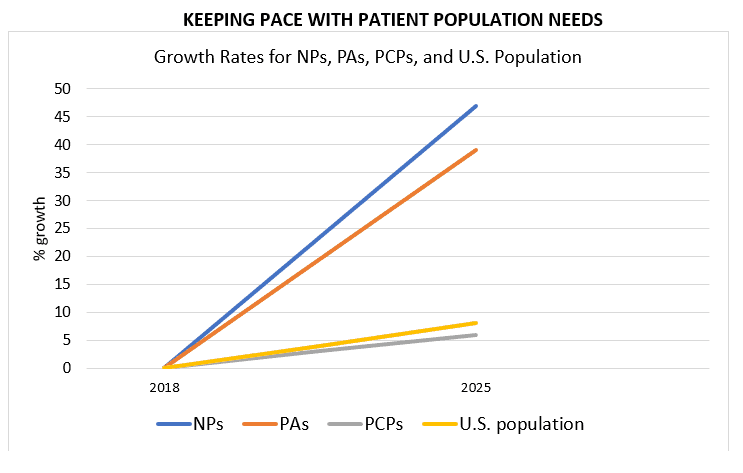The much-discussed shortage in primary care physicians isn’t going to get any better over the coming decades. In fact, it’s probably going to get a lot worse—and urgent care is likely to play a significant role in mitigating the risk for the U.S. population, according to a new report from UnitedHealthGroup.1
The problem isn’t that fewer physicians are committing to primary care as a career choice; their ranks are actually expected to grow by 6% between now and 2025. However, the U.S. population is growing at a faster rate so the shortfall that exists today (18,000 too few PCPs) is expected to widen to 49,000. If those figures hold true, a PCP with a typical patient panel would have to offer preventive, chronic, and acute care for 17.4 hours every day to meet demand.2
The answer, according to UHG, lies in the continued growth of “innovative delivery models” (defined by UHG as urgent care, retail clinics, and in-home clinical visits), in which advanced practice providers—primarily nurse practitioners and physician assistants when it comes to urgent care—will play an increasingly vital role. Fortunately, their growth is expected to outpace that of the patient population substantially (see below).

References
- Addressing the Nation’s Primary Care Shortage: Advanced Practice Clinicians and Innovative Care Delivery Models. Available at: https://www.unitedhealthgroup.com/content/dam/UHG/PDF/2018/UHG-Primary-Care-Report-2018.pdf. Accessed January 10, 2019.
- Bodenheimer T, Pham HH. Primary care; current problems and proposed solutions. Health Aff. 2010;29(5):799-805.
